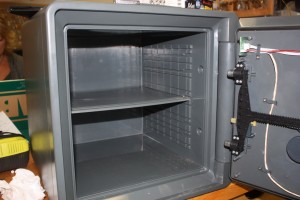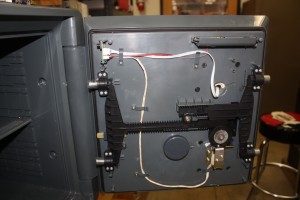Collectors of signatures, historic documents or stamps should secure their collections in good safes with two-hour fire ratings, right? Maybe not.
Fire safes protect papers from charring and burning if there is a fire. If you experience a fire, however, your documents are likely to be damaged by moisture in most types of safes. When subjected to heat the insulation gives off water vapor to the point where the inside air is saturated with water. As the safe cools down, lower internal temperatures cause the air to become super-saturated, so that papers will become damp or even wet. They will get wrinkly and inks may get blurry. In addition, water pressure from a fire hose may penetrate the crack between the safe door and frame, forcing water into the safe. If the safe is in a basement and water pools up there, that water may also seep inside the safe.
People in the safe and gun safe industries usually recommend that valuable documents be protected by putting them in plastic sleeves or Tupperware-type containers to protect them from moisture damage. This advice may be erroneous. There are hundreds of different plastic compositions and each has its own characteristics. Good information is hard to find, but the melt point will vary depending on the exact chemical composition.
Consider Tupperware: Most of their products are made from low density polyethylene (LDPE), high density polyethylene (HDPE) or high density polypropylene (HDPP). From what I can find these materials begin to melt at temps as low as 278 degrees F for HDPE, or 266 F for HDPE. Characteristics of the melting process also vary by chemical composition – they may just lose their shape, they might become sticky or they might give off damaging chemicals. That process might damage the items you are trying to protect. When fire safes are tested the inside temperature can go as high as 350 F before they are considered to have failed. Plastic containers, therefore, could potentially melt inside a safe that is “performing well”.
Next: A better type of safe for historic docs.


